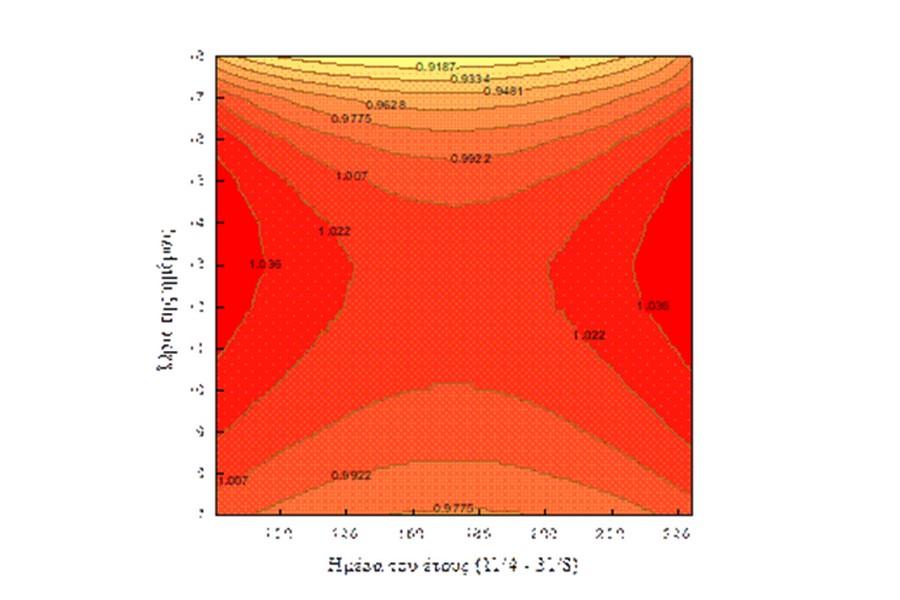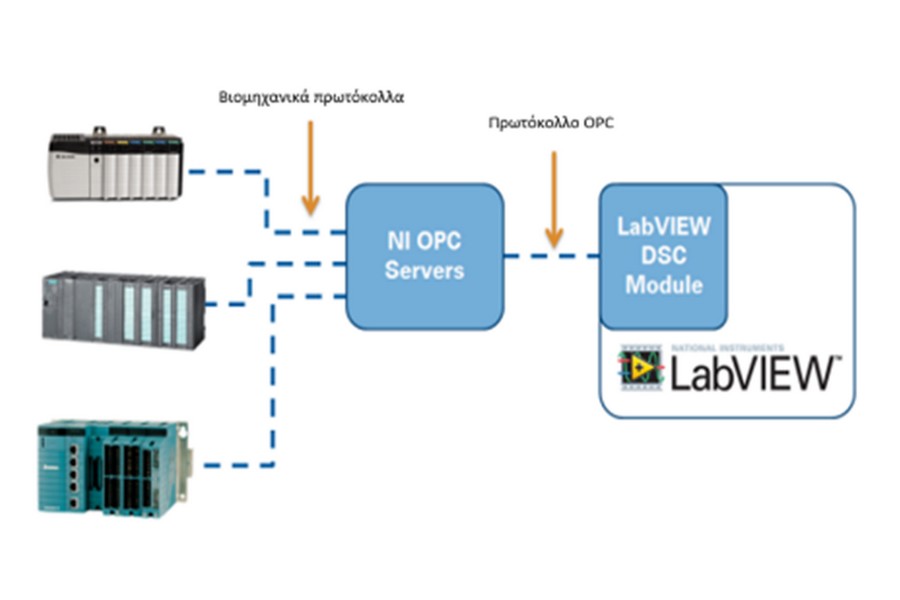The installation is utilized for studies in the following areas:
• Thermal energy production from vacuum solar collectors and hybrid thermophotovoltaic collectors.
• Thermal energy storage in the form of sensible heat in water as storage medium, and in the form of latent heat in inorganic phase change materials (PCM).
• Production of cooling through a zeolite adsorption chiller.
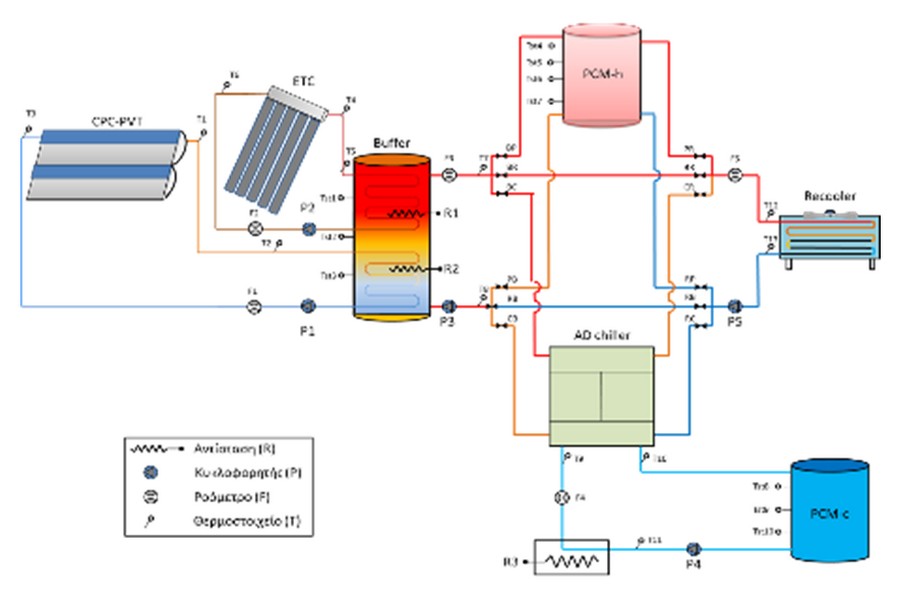
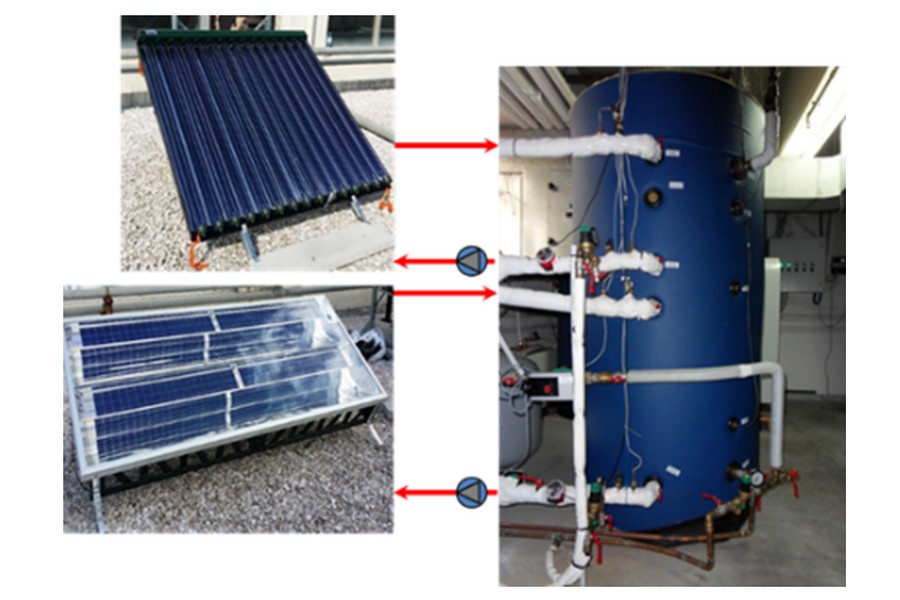
Characteristics
Rated power 10 kW
Thermal performance COP=0.5
Adsorbent LiCl
Hot water inlet temperature from PVT 55oC
Hot water inlet temperature
from vacuum collectors 92oC
Measuring Systems Temperature and pressure sensors
Operating Principle
Installed on the roof of the N building at a 30° slope, vacuum collectors (ETC) and thermophotovoltaic collectors (PVT) absorb the available solar radiation and convert it into thermal energy. PVT collectors provide the system with low enthalpy heat with outlet temperatures of the thermal fluid approximately at 45oC-50oC, while vacuum collectors exhibit increased efficiency with outlet temperatures of around 90oC-100oC due to reduced heat losses to the environment. In winter, thermal fluid containing glycol is utilized to prevent the formation of ice.
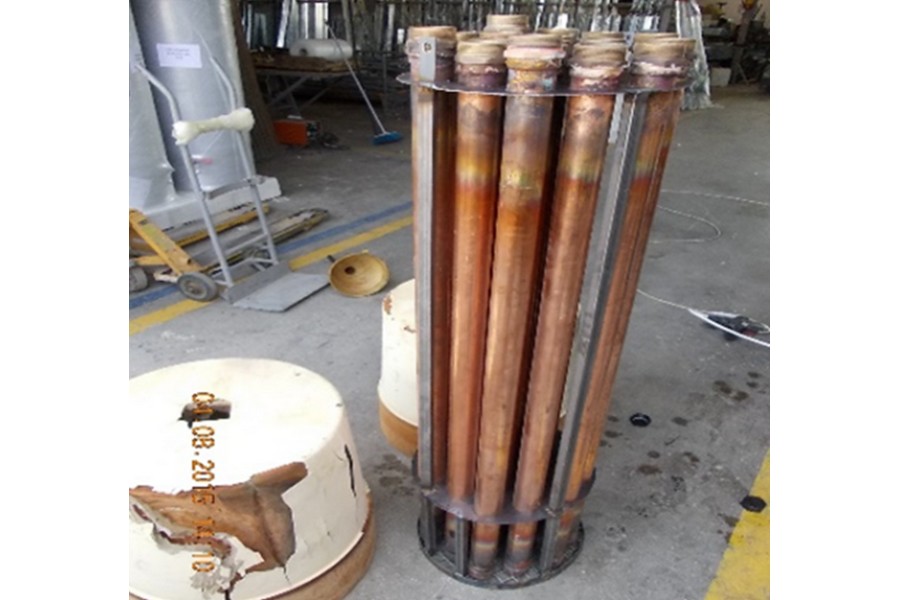

The two streams of heat, coming from the different types of collectors, through separate spiral exchangers, deliver their thermal energy to a hot water storage container located inside the laboratory. The total heat exchange surface of the exchanger for the vacuum collectors is 1.97m2, while that of the corresponding exchanger for the PVT collectors is 3.02m2. It should be emphasized that the existence of the exchangers inside the storage container ensures heat transfer between collectors and storage medium without mixing the currents, which allows the use of any medium as thermal fluid in the collectors. The thermal fluid circulates by means of two circulators that compensate for the linear and localized pressure losses of the piping network.
The hot water storage tank, with a capacity of 865lt, is equipped with two electric resistances of 18 kW power in total. The resistors are used, on the one hand, when the thermal power produced by the collectors is not sufficient to carry out the experiments; on the other hand, when the ambient temperature reaches low levels, and the operation of the collectors becomes unsafe due to increased possibility of ice formation. It should be noted that the storage container bears sufficient insulation (of 10cm radially) of soft polyurethane in order to minimize losses to the environment.




